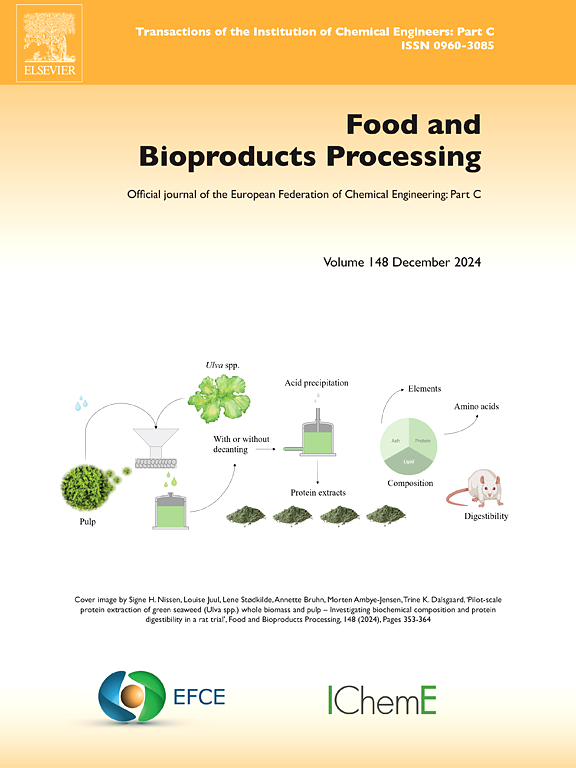Tailored production of butyric acid from mixed culture fermentation of food waste
IF 3.5
2区 农林科学
Q2 BIOTECHNOLOGY & APPLIED MICROBIOLOGY
引用次数: 0
Abstract
Volatile fatty acids (VFA) are high-value-added products obtained from the fermentation of waste feedstock. These are generally produced as a VFA mixture of C2 - C6 acids through mixed culture fermentation. The prospect of tailoring the process conditions in mixed culture fermentation is attractive since it can produce a predominance of a target VFA without the need for a sterile, pure culture-based process. Among VFAs, butyric acid has a wide range of industrial applications which are currently met by chemical synthesis. This study showed a targeted production of butyric acid in a mixed culture VFA fermentation under psychrophilic temperature. Compared to mesophilic conditions, the butyric acid produced at 17°C accumulated to up to 7 days at 0.5 g/L compared to in 37°C where it was not detected after day 1. The microbial community study showed the increased abundance of Sporosarcina and Solibacillus genus which degrades proteins, aiding the Clostridium_sensu_stricto spp. in producing butyric acid potentially through protein degradation. Within the detected bacterial diversity showing a lower Shannon index of 0.84 at 17ºC, these genera also showed a higher abundance. For further enhancing the hydrolysis, thermal-alkaline pretreatment of food waste was performed. However, it reduced the subsequent production of butyric acid as compared to untreated food waste. Under 17ºC, butyric acid’s concentration was 0.06 g/L, while at 37ºC, it was 0.12 g/L. This showed that intrinsic microflora of food waste was essential for its production. This selective accumulation of butyric acid over other VFAs offers a means of targeted VFA production using mixed culture fermentation under psychrophilic temperature.
求助全文
约1分钟内获得全文
求助全文
来源期刊

Food and Bioproducts Processing
工程技术-工程:化工
CiteScore
9.70
自引率
4.30%
发文量
115
审稿时长
24 days
期刊介绍:
Official Journal of the European Federation of Chemical Engineering:
Part C
FBP aims to be the principal international journal for publication of high quality, original papers in the branches of engineering and science dedicated to the safe processing of biological products. It is the only journal to exploit the synergy between biotechnology, bioprocessing and food engineering.
Papers showing how research results can be used in engineering design, and accounts of experimental or theoretical research work bringing new perspectives to established principles, highlighting unsolved problems or indicating directions for future research, are particularly welcome. Contributions that deal with new developments in equipment or processes and that can be given quantitative expression are encouraged. The journal is especially interested in papers that extend the boundaries of food and bioproducts processing.
The journal has a strong emphasis on the interface between engineering and food or bioproducts. Papers that are not likely to be published are those:
• Primarily concerned with food formulation
• That use experimental design techniques to obtain response surfaces but gain little insight from them
• That are empirical and ignore established mechanistic models, e.g., empirical drying curves
• That are primarily concerned about sensory evaluation and colour
• Concern the extraction, encapsulation and/or antioxidant activity of a specific biological material without providing insight that could be applied to a similar but different material,
• Containing only chemical analyses of biological materials.
 求助内容:
求助内容: 应助结果提醒方式:
应助结果提醒方式:


